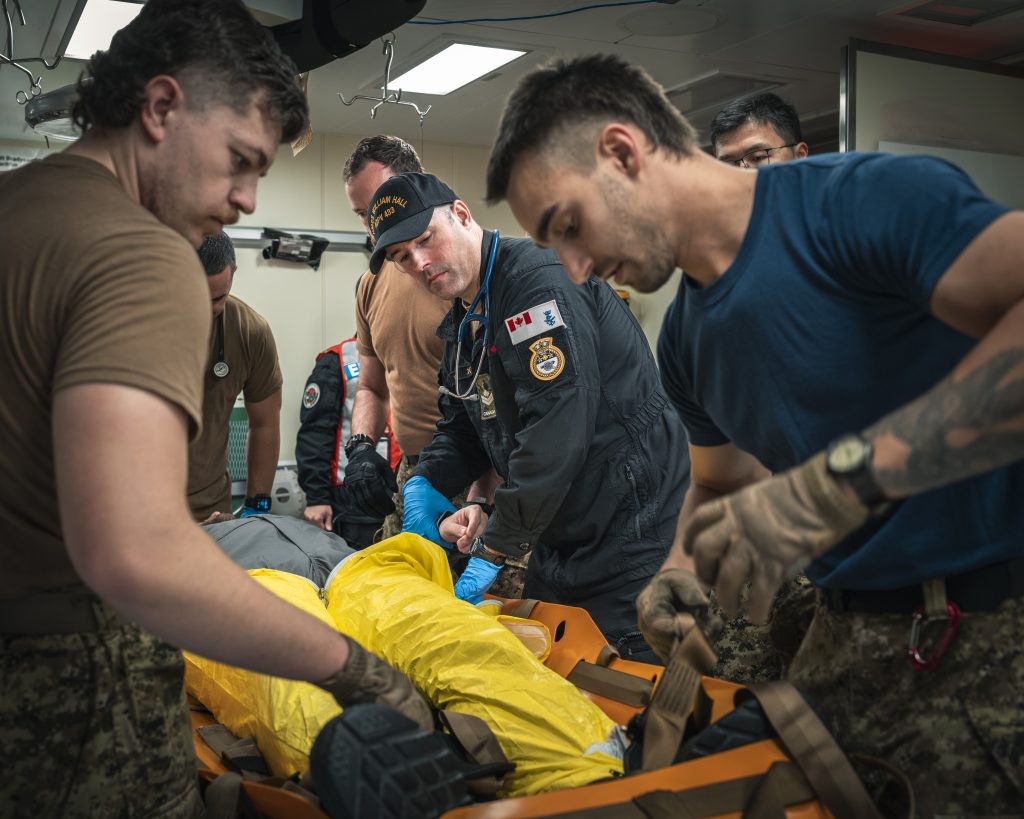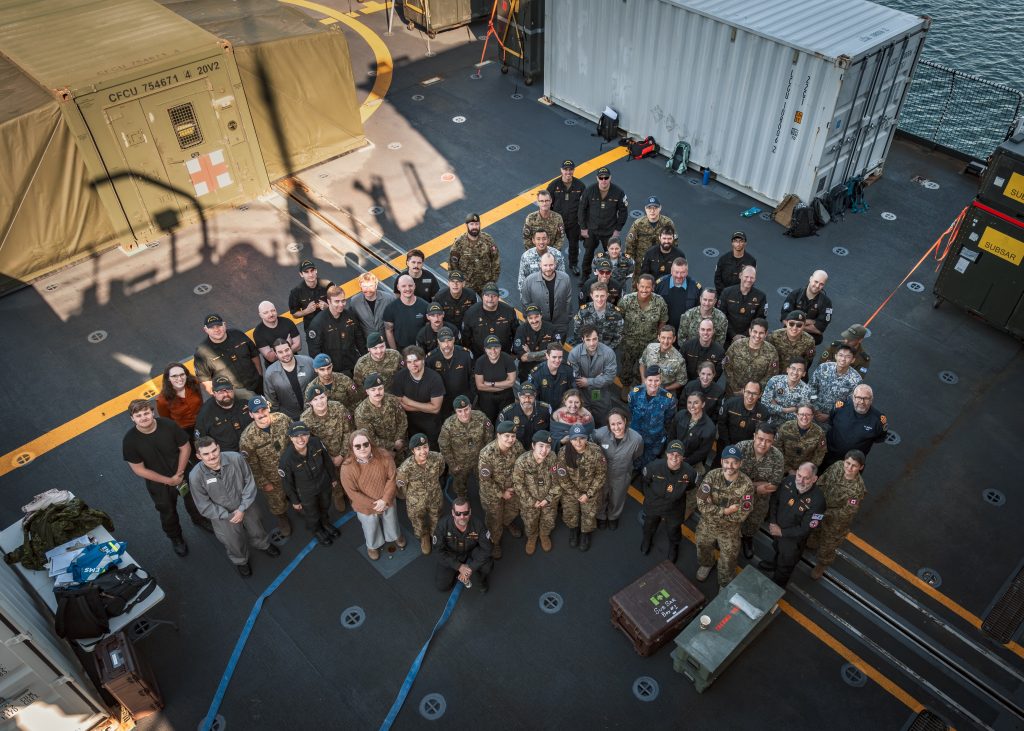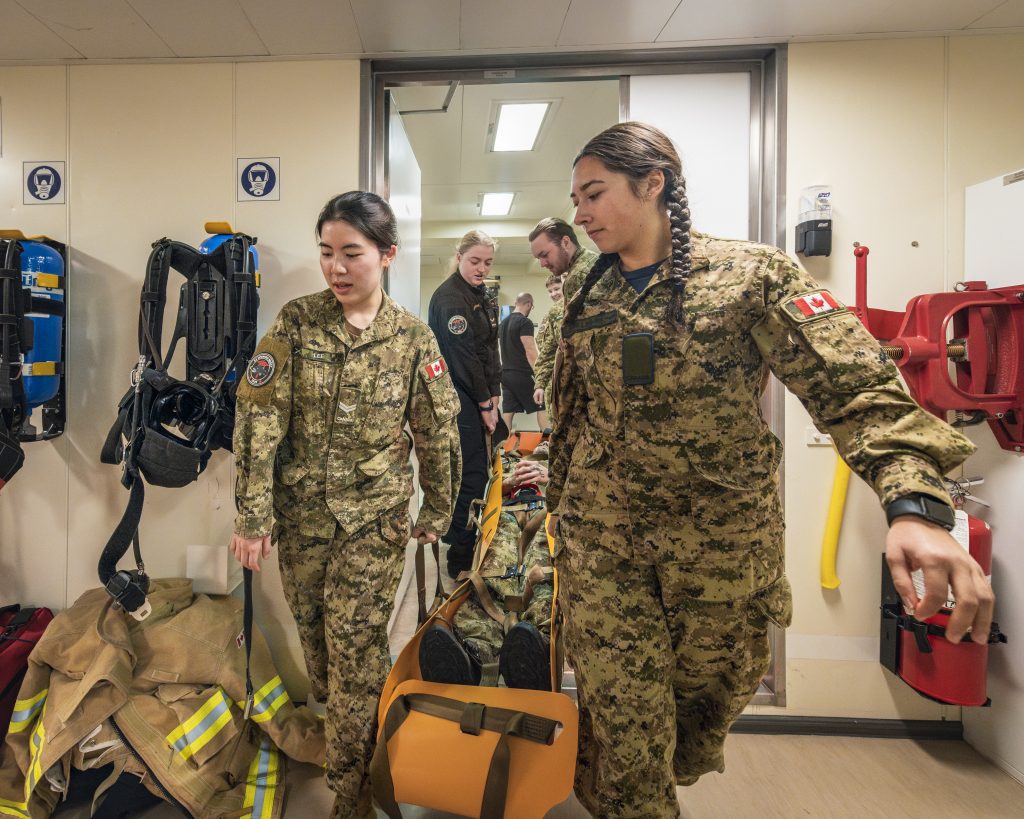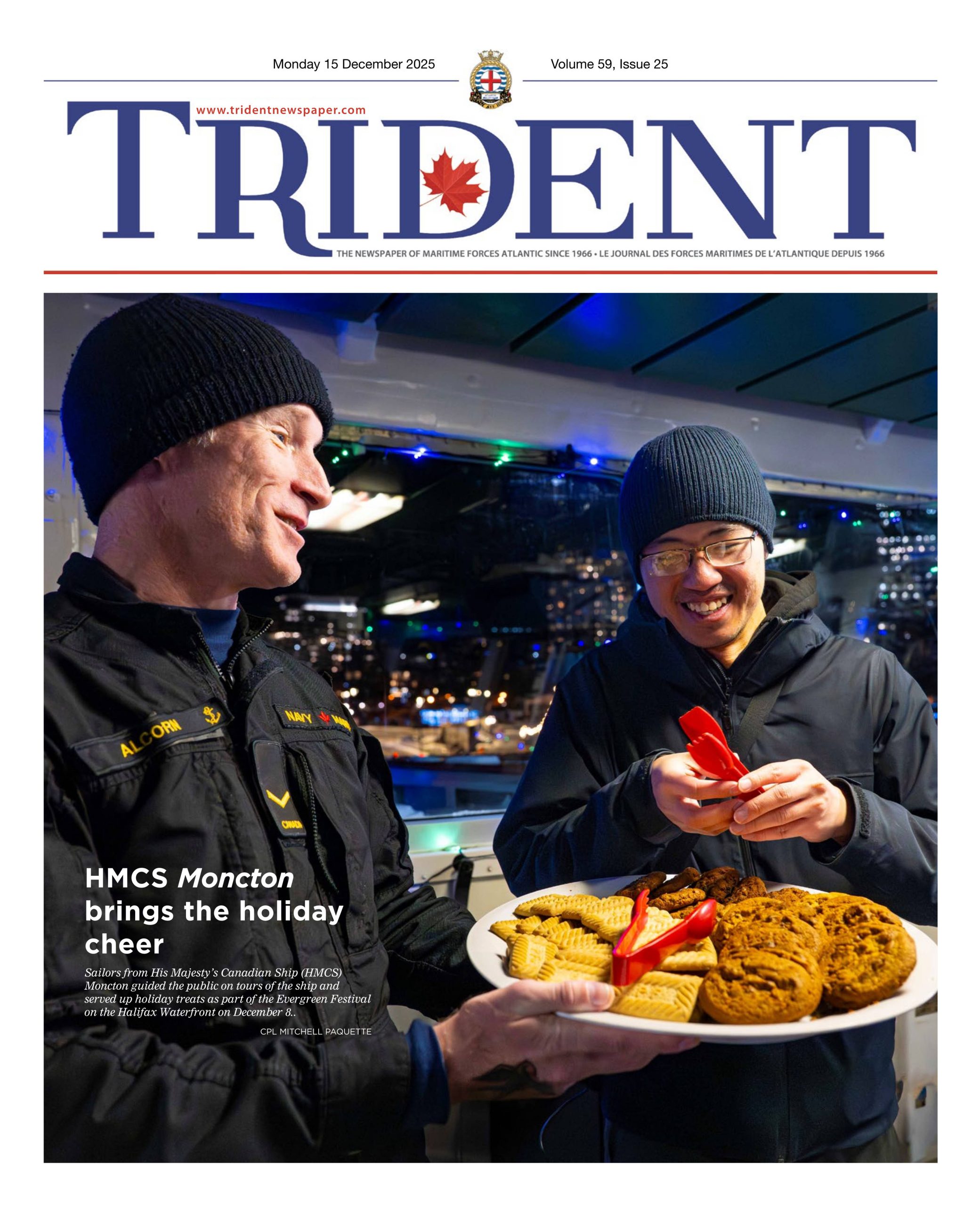
CPL BRIAN LEVESQUE
Saving lives below the surface
RCN leads Multinational Submarine Medical Training Exercise in Halifax
By Lt(N) Christopher Lyons,
Maritime Forces Atlantic Public Affairs

CPL BRIAN LEVESQUE
In late October, the Royal Canadian Navy (RCN) transformed His Majesty’s Canadian Ship (HMCS) William Hall, a Harry DeWolf-class Arctic Offshore Patrol Vessel (AOPV), into the centrepiece of one of the most complex and collaborative medical training exercises in its history.
Moored alongside at Canadian Forces Base (CFB) Halifax, the ship hosted Exercise VIPERFISH MERCY 2025, a fully simulated submarine medical and mass casualty exercise that brought together Canadian Armed Forces (CAF) personnel, NATO allies, and international defence partners for a week of intensive scenario-based training. The exercise, recognized as the RCN’s largest annual medical training event, showcased Canada’s leadership in submarine medicine and the unwavering commitment to global maritime safety.
VIPERFISH MERCY was designed to replicate the high-stakes environment of a distressed submarine emergency, where medical personnel must respond quickly and effectively in confined, high-risk conditions. Integrating the Submarine Medical Course with realistic rescue simulations, the exercise tested everything from casualty movement and triage to onboard treatment and coordination with multinational support teams. The entire exercise was conducted aboard HMCS William Hall, simulating both surface and submersible rescue phases without ever leaving the jetty, an innovative approach that allowed full immersion while maintaining logistical control.
What set this year’s exercise apart was its truly international scope. Nine medical candidates from six countries – Singapore, Australia, the Netherlands, the United Kingdom, Israel, and Malaysia – joined their Canadian counterparts, supported by staff from Germany, the UK, and the United States Navy. This level of multinational participation underscored Canada’s role as a trusted partner in submarine search and rescue (SUBSAR) operations and reinforced the importance of interoperability in responding to emergencies at sea. The collaboration was not only a testament to shared readiness but also a reflection of the trust and respect Canada commands within the global defence community.
Medical teams were tasked with managing simulated mass casualty events, including the rescue of dozens of personnel from a disabled submarine. These exercises demanded not only technical skill but also adaptability, teamwork, and resilience. SubMed students and CAF clinicians worked side-by-side, navigating the challenges of confined spaces, limited resources, and time-sensitive decision-making. The result was a powerful demonstration of human-centred training, where innovation meets compassion, and where every action is driven by the imperative to save lives.
The success of VIPERFISH MERCY 2025 was not only measured in the precision of its simulations but in the depth of collaboration and innovation it fostered. The exercise brought together a diverse cohort of medical professionals and naval personnel, each contributing unique expertise to a shared mission: saving lives in the most unforgiving environments. The realism of the scenarios – confined spaces, simulated pressure conditions, and mass casualty dynamics – pushed participants to adapt quickly, communicate clearly, and perform under stress. These conditions mirrored the challenges of actual submarine emergencies, where every second counts and coordination is critical.

Adding to the impact of the exercise was its use of modern naval platforms like HMCS William Hall, which was outfitted with modular medical facilities to support onboard triage and treatment. The ship’s versatility allowed for seamless transitions between surface and submersible rescue simulations, creating a dynamic training environment that tested both individual skill and team cohesion. The integration of advanced medical protocols with naval operations highlights the RCN’s ability to innovate and evolve, ensuring that its personnel are equipped not only with technical proficiency but with the adaptability required in real-world crises.
The presence of international participants added a vital layer of complexity and authenticity. This multinational collaboration was more than symbolic; it was operational. It demonstrated how allied forces can come together to share knowledge, synchronize procedures, and build trust in preparation for joint missions. In doing so, VIPERFISH MERCY reinforced Canada’s role as a leader in submarine medical readiness and a reliable partner in global maritime safety.
Leadership also played a key role in shaping the exercise’s success. Commodore Jacob French, Commander Canadian Fleet Atlantic, emphasized the strategic value of the training, noting that Exercise VIPERFISH MERCY 2025 reflects the RCN’s dedication to operational excellence and Canada’s leadership in submarine medical readiness. Captain(N) Preston Mcintosh, Chief of Staff to the Maritime Component Commander, echoed this sentiment, highlighting the importance of rehearsing mass casualty protocols in realistic conditions and the strength of Canada’s global partnerships.
In a single week, VIPERFISH MERCY achieved what few exercises can: it brought together nations, tested critical capabilities, and reaffirmed the values that define Canada’s military: professionalism, preparedness, and partnership. The exercise was more than a training event. It was a demonstration that Canada is ready to lead, ready to collaborate, and ready to respond when lives are at stake beneath the surface of the sea.
From the confined corridors of a simulated submarine to the broader stage of international defence cooperation, VIPERFISH MERCY 2025 was a resounding success. It reminded us that in the face of uncertainty, preparation is paramount, and that when the distress call comes, Canada will be ready.






